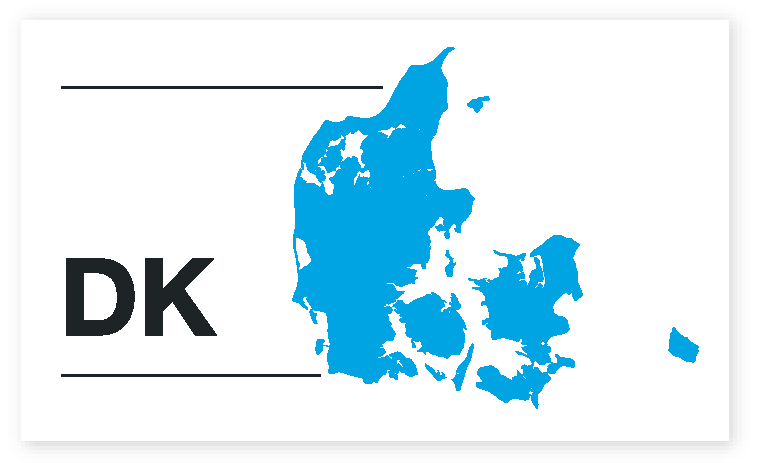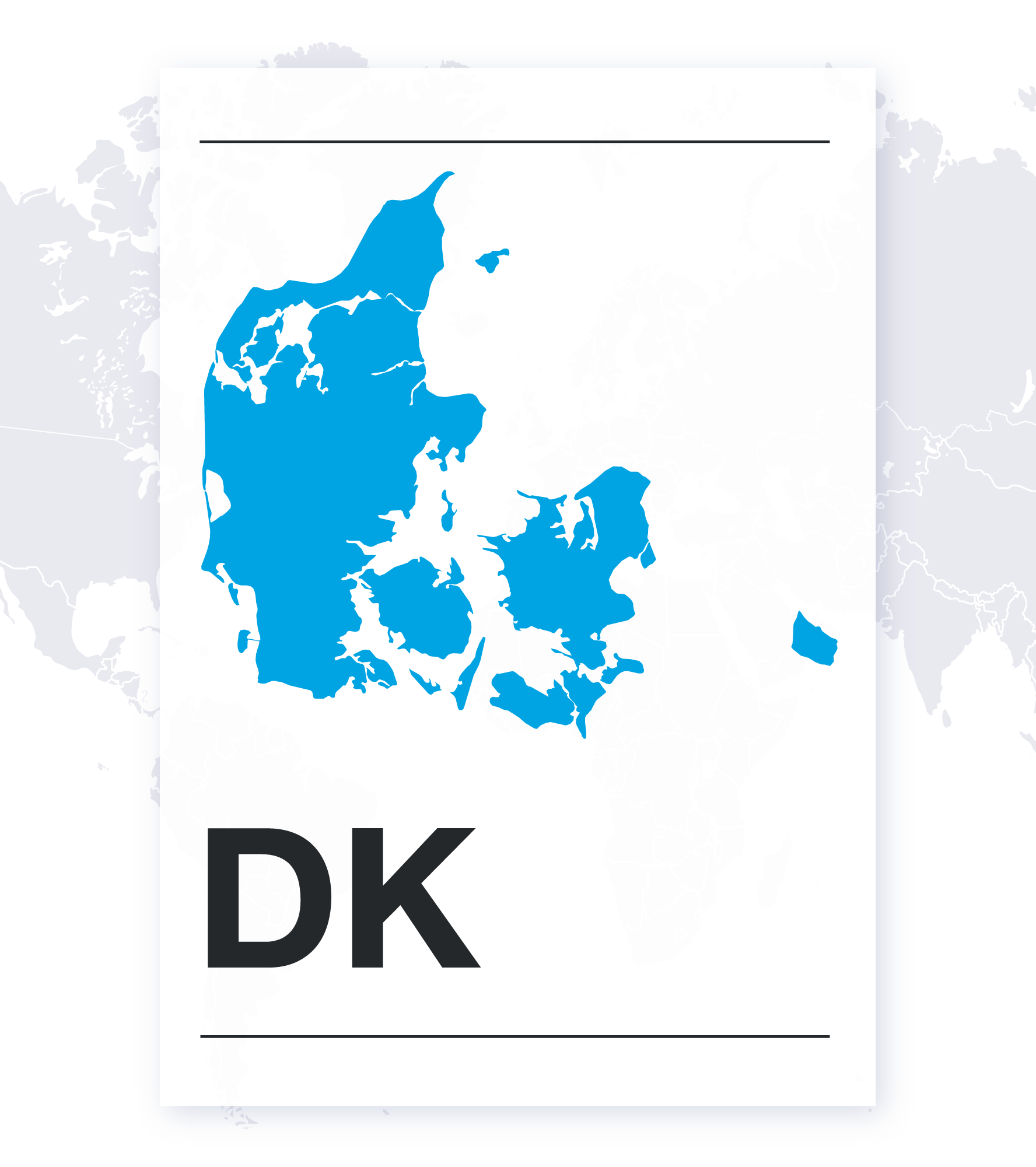Denmark Gender Pay Gap Reporting Law Guide


Introduction
Denmark's Consolidation Act on Equal Pay to Men and Women prohibits pay discrimination on the grounds of gender. The country's Equal Pay Act first came into force in February 1976.
Employers with 35 or more employees are required to submit either gender-segregated wage statistics, or an equal pay report on an annual basis.
Contact us
Denmark Reporting Requirements
Who Needs to Report?
Public and private employers with 35 or more employees are required to comply with Denmark's Equal Pay Act. Companies in the farming, gardening, forestry, and fisheries sectors are exempt from reporting requirements.
What to Report?
Applicable employers have two reporting options outlined below:
Gender-Segregated Wage Statistics
Gender-segregated wage statistics are required for groups of a minimum of 10 employees of each gender calculated by 6-digit DISCO code for the purpose of consulting and informing employees of gender wage gaps.
DISCO-08 (DISCO) is the official Danish version of the international classification of job titles, International Standard Classification of Occupations (ISCO-08) which enables comparisons of employees with the same job functions regardless of their formal job title and educational background. ISCO is prepared by the International Labor Organization.
Employers are required to calculate gender-segregated wage statistics for employee groups corresponding to the 6-digit DISCO code. The employer is obligated to give an account of the design of the statistics and for the wage concept applied. Codes are provided by Denmark Statistics website.
If the gender-segregated wage statistics are submitted confidentially for the good of the company's legitimate interests the information may not be disclosed to a third party.
In addition, the act states "when a professional classification system is used to determine pay, this system must be based on the same criteria for male and female employees and be structured so that discrimination on grounds of gender is ruled out. The assessment of the value of the work will take place on the basis of a general assessment of relevant qualifications and other relevant factors."
Equal Pay Report
Alternatively, if agreement is reached with employees, an organization may submit an Equal Pay Report instead of gender-segregated wage statistics. Equal Pay Reports must include the following:
- Description of the terms which are used to determine the of wages of men and women in the enterprise.
- Description of the action-oriented initiatives taken to prevent and reduce gender wage gaps. The initiatives may run over a three-year period.
- Specific follow-up measures to be taken on the initiatives detailed in the report.
Corrective measures are not required if employers choose to submit gender-segregated wage statistics.
Pay is defined in the act as the "normal basic or minimum pay and all other payments paid out to the employee by the employer because of the employment relationship, be it payment in cash or in kind."
Where and When to Report?
Regulatory Filing
Gender-Segregated Wage Statistics are submitted to Statistics Denmark, a governmental organization under the Ministry of the Interior and Housing. Reports are to be submitted via the Statistics Denmark website.
Internal Disclosure
There are no requirements for internal disclosure.
Deadlines and Cadence
The deadline is Dec. 31 of each year, reporting on the previous year.
Gender-segregated wage statistics and equal pay reports must be submitted annually.
Denmark Pay Transparency Requirements
There are currently no requirements for pay transparency in Denmark. However, some collective bargaining agreements might require transparency in certain sectors.
Employment equity standards
People performing the same work or work of equal value in Denmark must receive the same pay, irrespective of gender.
Denmark's Gender Equality Act promotes gender equality in all functions in society based on the equal value of men and women. Further, the country's Act on Equal Treatment between Men and Women requires men and women to be treated equally at work. The act covers working conditions, employment and termination, promotion and training, membership of labor organizations, and more.
The Risks of Non-Compliance
Enforcement of the Act on Equal Pay to Men and Women is overseen by the Minister for Employment. Non-compliance will be sanctioned by a fine unless higher punishments are imposed under other legislation. Enterprises may be held criminally liable under the Danish Criminal Code.
An employee who finds that the employer does not comply with the duty to offer equal pay, including equal pay conditions under the Act may pursue legal action. If a person has been discriminated against, the other party must prove that the principle of equal treatment has not been violated.
How Can Trusaic Assist with Denmark Gender-Segregated Wage Statistics and Equal Pay Reporting Compliance?
1. Comply - Use Trusaic's GPDR solution to complete required reporting by compliance deadlines:
Applicability Determination: Perform an accurate assessment of your applicability, according to jurisdictional specific definitions and regulatory frameworks so you can understand your reporting obligations across the globe.
Deadline Management: Prepare ahead of time with project timelines, timely notifications, and reminders, to keep you on track to meeting jurisdictional deadlines.
Expert Legal Guidance and Support: Benefit from the expertise of our trusted pay equity attorneys, so you understand your compliance requirements across a diverse global regulatory landscape. Receive world-class customer support, including assistance throughout the compliance process.
Streamlined Data Extraction: Collect the necessary data for analysis and submission with a simple click of a button; powered by certified data integrations with the world's largest HCM, HR and Payroll platforms, including Workday, SAP, UKG and ADP. Provide data through Trusaic's Workplace Equity platform, a SOC 2 Type II and GDPR-compliant tool for data transmission.
Data Quality Assurance: Trusaic performs data validations to ensure your collected data and information aligns with the standards and definitions provided by each jurisdiction.
Compliant Report Outputs: Take away the burden of reporting by effortlessly generating outputs containing necessary compliance information.
Reporting Checklist: Follow step-by-step guidance on where, when and how to report to any jurisdiction's regulatory body, as well as your required internal disclosure and public posting obligations.
2. Correct - Use PayParity and OpportunityParity to understand, explain and resolve pay disparities:
Risk Assessments: Stay aware of any potential exposure to any government audit or litigation. Our cross-functional team of data scientists, statisticians, and government regulatory compliance experts have rigorously worked to reverse-engineer the calculations that will be used by jurisdictions to estimate pay disparities, so you can prepare in advance.
Understand your Pay Gaps: Leverage Trusaic's pay equity software solution to explain your pay gaps so you can understand the root causes and safeguard from equal pay claims and legal action.
Resolve Pay Disparities: Make pay adjustments where applicable so you can eliminate pay disparities and show improvements in your reported pay gaps from one year to the next.
Identify Barriers to Professional Growth: Ensure workforce diversity and equity with hiring, promotion, retention, and opportunity analytics using opportunity equity software solution.
3. Communicate - Use Trusaic's Workplace Equity Solution to communicate narratives and share salary ranges with confidence:
Workplace Equity Narrative: Communicate the sources of your pay gaps, progress objectives, and corrective measures to employees and internal stakeholders with Trusaic's Workplace Equity product suite. Show data-backed progress in your pay gaps over time.
Salary Range Explainability: Use Salary Range Finder to establish and post competitive and equitable pay ranges to confidently comply with pay transparency laws.
Mitigate Risk of Recurrent Pay Disparities: Ensure new hires receive fair pay offers with the use of external labor market data and internal pay equity analytics to reduce unplanned and expensive pay remediations.
How to Prepare to Comply with the EU Directive
The EU Pay Transparency Directive was approved in 2023, establishing a clear framework for EU member states to apply the principle of equal pay for equal work or work of equal value.
EU member states have three years from June 7, 2023 to transpose the directive into law. Likely implementation dates are 2026, however, some countries may enact legislation earlier. All 27 member states are required to adopt the directive.
Employers operating in EU member states can take several preliminary steps to ensure compliance with the upcoming legislation. The EU Directive includes a requirement for a Joint Pay Assessment where pay gaps are higher than 5%. Danish men earn 12.7% more than women, which reflects the EU's average pay gap. Danish employers are therefore at significant risk of sanctions.
Trusaic is GDPR compliant and can assist any organization in any EU state in meeting its obligations under both the EU Corporate Sustainability Reporting Directive and the EU Pay Transparency Directive.
Sign up for PayParity by May 31, 2024
and receive OpportunityParityTM at no additional cost
Sign up for PayParity by May 31, 2024 and receive OpportunityParityTM at no additional cost
